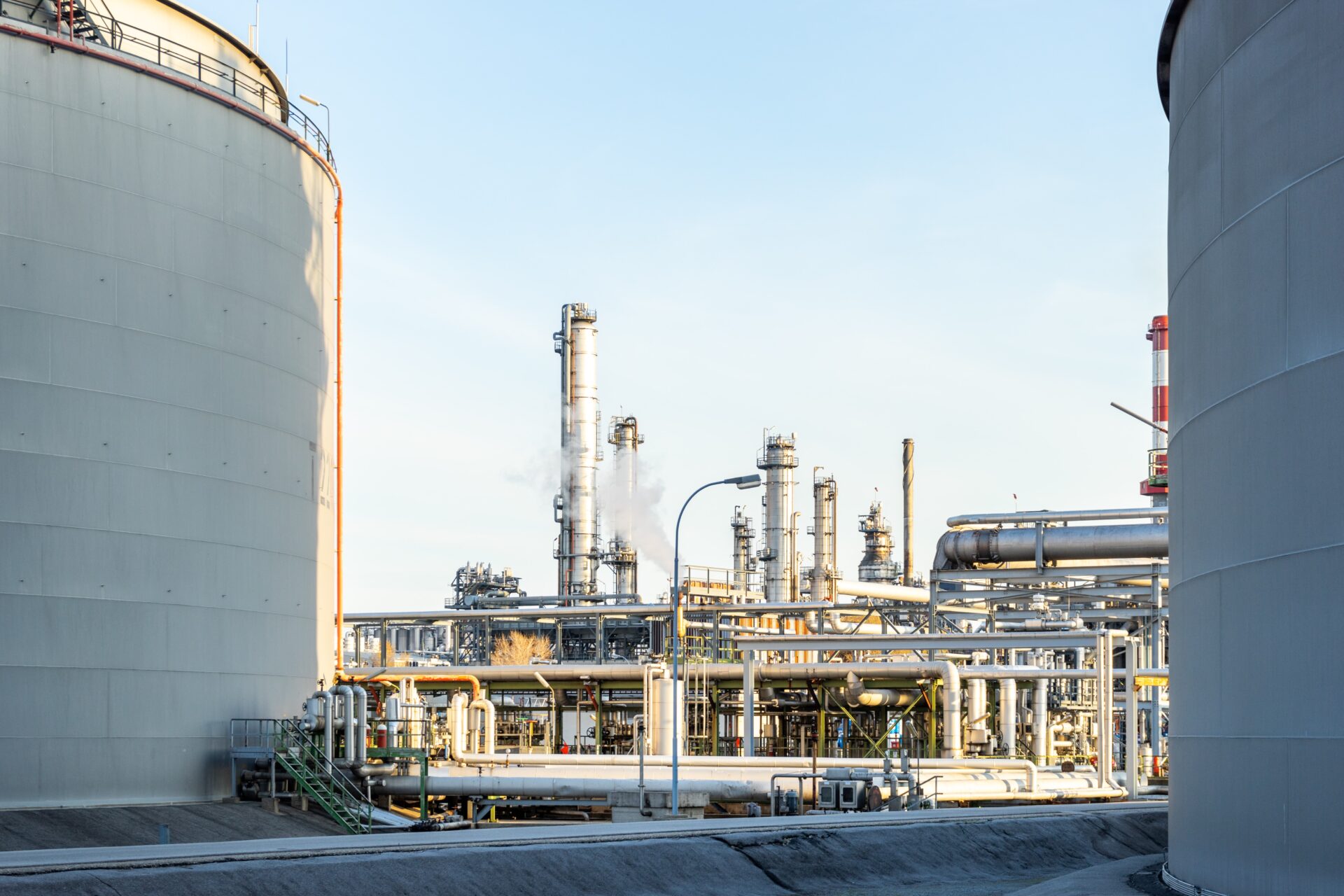
Sharp Increase in Energy Prices
Based on this prelimary analysis an updated WIFO Research Brief was published on March 15, 2022.
Energy prices have already risen significantly in 2021 as the economy recovers from the COVID-19 induced economic slump. In view of the acts of war in Ukraine, further measures to ease the burden on consumers and companies beyond those adopted in recent weeks are becoming more urgent.
A number of relief options are currently being discussed in Austria, as in many other countries. Two measures have been called for particularly intensively in the recent public debate: postponing the introduction of a CO2 price planned for July 2022 and reducing the VAT rate for energy. However, these two options turn out to be less suitable for several reasons. Much more suitable are more targeted and more accurate measures to cushion the loss of purchasing power.
Adherence to the planned introduction of a carbon price
As of July 2022, the adopted carbon pricing mechanism for the non-emissions trading sector will take effect. It is part of a comprehensive eco-social tax reform that provides for the redistribution of revenues to households via a regionally differentiated climate bonus as a compensation measure. This is supplemented with provisions for hardship relief for companies and companies at risk of carbon leakage, as well as relief for agriculture. On average for the 2022-2025 period, the compensation measures will exceed the expected revenue volume.
Postponing the introduction of carbon pricing would be quick to implement without administrative burden compared to other measures to mitigate high energy prices in the short term. Nevertheless, the scheduled implementation of carbon pricing should be adhered to. The following arguments speak in favour of this:
-
The challenges of combating climate change remain despite energy price increases, and further delay of climate action must be avoided; therefore, a carbon price is indispensable as an important signal and steering instrument.
-
Compared to the currently observable price increases, the increase due to the carbon price is small because of the initially moderate carbon price of 30 €; in the coming years, it will also be weakened by the envisaged price stabilisation mechanism if price increases continue. In addition, the CO2 price will be devalued in real terms by the expected high inflation.
-
The law provides a "brake" for the years after 2022 in the event of high fossil fuel prices. The price stabilisation mechanism will mitigate fluctuations in the price of energy, in both directions. For example, if the fossil energy price index rises above 12.5 percent, the planned carbon price increase in the following year is reduced by half.
-
With regard to undesirable distribution effects, the regionally graduated climate bonus provides sufficient compensation for the carbon price so that, on average, no burden is placed on the population as a result of the introduction of the carbon price.
-
The law provides for a hardship clause for particularly affected companies in the non-emissions trading sector. This is currently being negotiated between the coalition partners. It should be designed in such a way that the introduction of carbon pricing does not distort international competition to the detriment of domestic producers. The presumably permanently heavier burden of higher energy prices should be taken into account.
In any case, in view of the continuously increasing urgency of the climate crisis, the long-term climate goals must not be put on hold due to short-term crisis-related developments. A reduction in fossil energy consumption increases the long-term resilience of the economy and society to geopolitically induced energy price increases. In this context, priority should be given to financial support for investments in alternative heating and mobility systems as well as energy efficiency.
No reduction of the value added tax on energy
Energy is subject to the regular VAT rate, which is levied as a uniform percentage (20 percent in Austria) on energy prices. With every increase in energy prices, the value added tax thus causes an additional burden on households and companies and acts as an inflation driver. At the same time, the public sector automatically receives higher VAT revenues.
It is therefore not only in Austria that the reduction of the regular VAT rate on energy is under discussion. This measure can be implemented quickly and without much administrative burden. However, its suitability as a relief measure is limited:
-
The VAT reduction only has a relieving effect if it is passed on to consumers in the form of lower prices. The temporary VAT reduction in Germany in the second half of 2020 was only partially passed on to consumers, at least in the diesel and gasoline sectors.
-
If it is indeed passed on in full or in part, consumers who consume the most energy, i.e. those who tend to be in the upper income brackets, will benefit overproportionately. In contrast, lower-income households receive little relief in absolute terms.
-
The relief provided by a reduction in the VAT on fuel to a non-negligible extent benefits foreign companies through tank tourism.
-
Finally, a temporary VAT reduction on energy runs the risk that a return to the regular VAT rate at a later date will exert additional inflationary pressure.
The fiscal costs that would be associated with a VAT reduction could be used in a much more targeted way to fund more targeted measures.
In any case, the additional VAT revenues induced by the energy price increases should be promptly returned to households and businesses in the form of relief measures. In addition, part of the additional revenue could be used to finance public investments to facilitate the switch to emission-free energy sources.
If a VAT reduction cannot be avoided for political reasons, it should be applied to electricity, but not to the fossil fuels natural gas or oil. This would increase incentives to make the energy mix more ecological. Such a measure would, however, make sense as a lasting structural measure.
Relief measures for households
The rapid rise in energy prices is a particular challenge for low-income households with little or no savings. The focus of relief measures should therefore be on the particularly vulnerable groups in order to cushion social hardship. An orientation in this regard is provided by looking at energy expenditures disaggregated by income quintiles and energy source. The additional revenue from VAT, for example, could be used for relief measures for households.
Measures to ease the burden on households can be differentiated according to the timeframe of their focus.
For short-term relief, measures can be used that limit the current additional costs:-
Transfer payments; whereby it is to be discussed whether these are to be paid only up to a certain income limit or to all households.
-
(Temporarily) lowering rates in the lower and middle income tax brackets and increasing the negative tax. Alternatively, health insurance contributions could be temporarily lowered and financed from the additional VAT revenues. WIFO sees this relief measure as particularly promising. This is because it would have the particular advantage of reducing the pressure to stabilise real net wages by increasing nominal wages in the autumn wage bargaining round. If the high, largely imported inflation to be expected in 2022 were fully reflected in higher nominal wages, Austria would be at risk of entering a wage-price spiral. Here, early talks with the collective bargaining partners would make sense.
Medium-term measures include the promotion of investments and changes to the regulatory framework (market barriers, e.g. owner-tenant, co-ownership, etc.):
-
Upscaling of thermal refurbishment and heating exchange (investment promotion, heating exchange mandate)
-
Alternative energy supply and utilisation approaches (neighbourhood solutions, geothermal energy)
-
Promotion of alternative mobility – micro-public transport, infrastructure development (local public transport, cycling and walking)
-
Promote revitalisation of town centres, etc.
- Promote energy efficiency (replacement of inefficient appliances, etc.)
Increasing the mileage allowance or the commuter allowance, on the other hand, does not seem to be very effective. On the one hand, commuter subsidies in Austria are very generous anyway, if one takes into account all measures at the federal level (transport deduction, commuter allowance, commuter euro, increased negative tax, job ticket) as well as the subsidies of the federal provinces. On the other hand, the relief effect of the commuter allowance increases with income. Further increases in the commuter allowance maintain the incentive to urban sprawl or to accept long distances between home and work. Instead, the commuter subsidies should be simplified and ecologised.
Corporate policy aspects
The rapid rise in energy prices poses major challenges for companies with energy-intensive production processes in particular, regardless of company size. The focus of corporate policy should therefore be on energy-intensive companies. The sharp rise in energy costs compared with previous years is squeezing profit margins and can lead to losses if the market situation does not allow the additional costs to be passed on sufficiently via prices.
The hardship provision currently under discussion in the National Emissions Allowance Trading Act 2022 (NEHG 2022) is limited in the current draft to companies not subject to EU emissions trading. The regulation cushions the additional costs of carbon pricing for energy-intensive companies, but beyond that does not provide any relief for the sharp rise in energy prices. A reduction in the VAT on energy would also have an effect on only a few companies, as the VAT is treated as a pass-through item and its reduction therefore does not lead to savings.
The high energy prices lead to short- and medium-term adjustment costs for companies in particular. Depending on demand elasticity, sales prices cannot be adjusted at the same time as costs. To reduce adjustment costs, one could consider lowering the electricity levy to the EU minimum level. It is true that energy-intensive production sectors are already reimbursed for taxes exceeding 0.5 percent of the net production value via the energy tax rebate. Nevertheless, the reduction of the electricity tax would contribute to a broad relief for households and companies that are not entitled to energy tax rebates. Such a measure would bear further incentives that would make the phase-out of fossil fuels more attractive. In view of the expected permanently higher electricity prices in the course of decarbonisation of the energy system, this measure makes sense in terms of structural policy and should be implemented permanently. The natural gas levy, on the other hand, should not be touched.
In the event of extreme energy price increases and, above all, in the event of possible shortages and associated energy rationing, options for short-time work should be made available so that companies can compensate for production losses quickly and unbureaucratically.
One focus of industrial policy should be on protecting security of supply. Rationing of energy is associated with even higher costs for companies than high energy prices. Therefore, policy initiatives that quickly open up new sources of supply for gas or alternative energy sources and more extensive energy stockpiling should be prioritised.
The current rise in energy prices highlights the tensions of decarbonisation, both in terms of the companies affected and the possibility of relying on alternative technologies. They also highlight the need to accelerate the transition to a carbon-neutral economy. "Green investments" will be promoted as part of the investment premium. However, this will only have an effect in the medium term. Measures designed to mitigate the effects of price increases in the short term should not undermine the transformation process needed in the long term.
Energy-intensive production technologies or business models are particularly affected by the energy price increases, regardless of company size. Energy-intensive companies that are not covered by EU emissions trading can best be supported by the hardship provision under the NEHG 2022, as already explained above.
The authors of this brief analysis are sceptical of a VAT cut in terms of business policy: both an undifferentiated and a specific VAT cut, because it represents a subsidy for consumer-related sectors and does not take energy-intensive upstream industries into account. If such measures are taken for consumers, however, companies should not be excluded (then many consumption-related service providers are affected).





